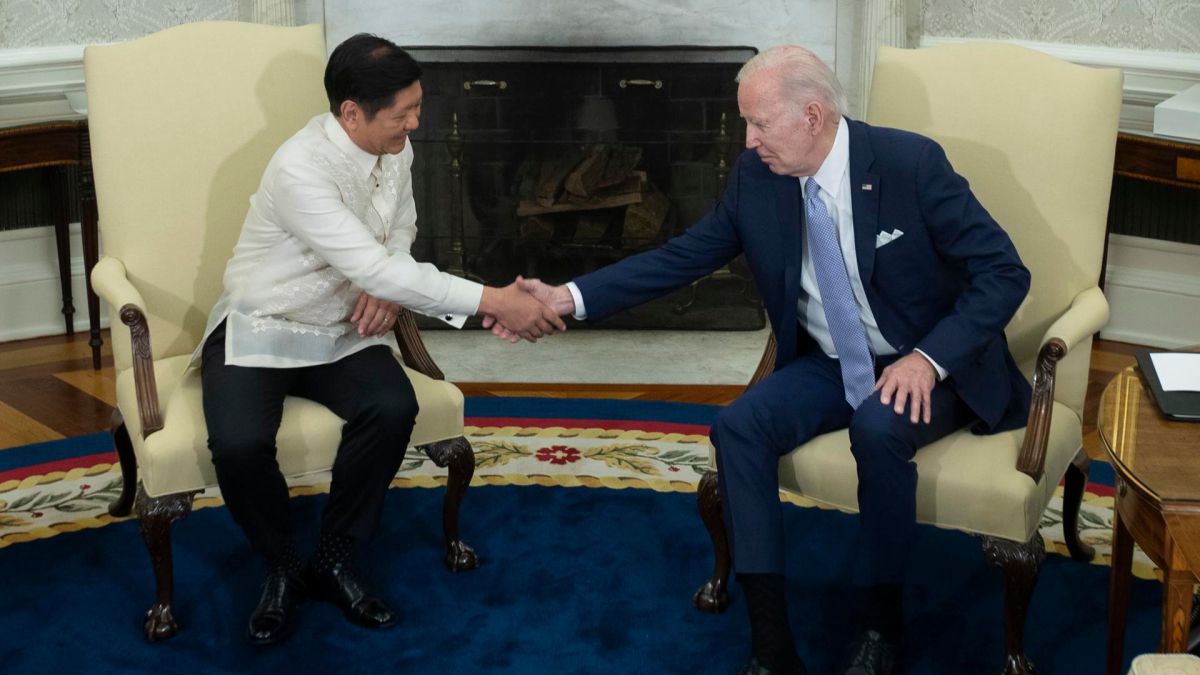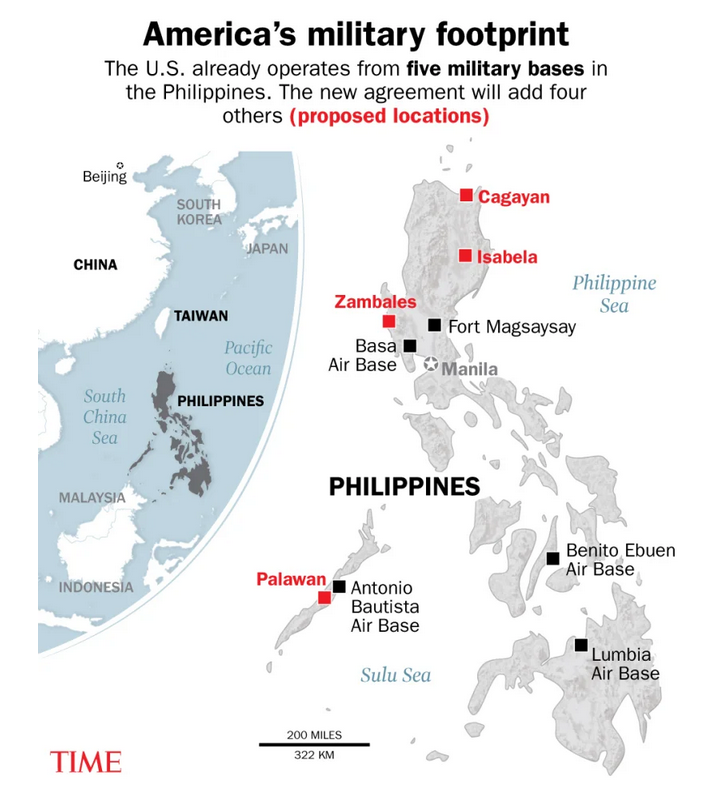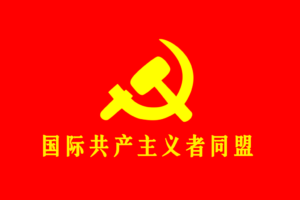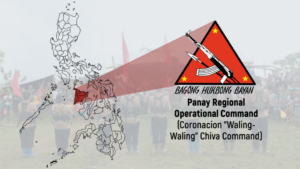
Yankees increase their military presence in the Philippines
On May 4th, an agreement between the US and the Filipino State to increase the number of US military bases in the Asian country was made official. The number of bases will be increased from five to nine in order to ‘strengthen security in the face of the Chinese threat’, declared Philippine President Ferdinand Marcos Jr.
The increase in military bases is based on the Enhanced Defense Cooperation Agreement [EDCA] signed in 2014 during Barack Obama’s term in office. The EDCA was signed after the former US president’s ‘pivot’ to the Pacific, at a time when US foreign policy strengthen its presence, economically, politically and militarily, in countries such as Brunei, Cambodia, Indonesia, Laos, Malaysia, Myanmar, Thailand, Vietnam, Singapore and, of course, the Philippines. It was not a new thing that the United States had interests in the area, but during that year there was an intensification of capital invested by U.S. imperialism and an increase in treaties to favor the dominant country. In part, this increase in policy is due to the intention of the superpower to prevent China from increasing its dominance in the area. In this way, the United States pursued its strategy of continuing its role as the leading economic, military and political power in the region.
With the renewal of the EDCA, the United States wants to continue the historical strategy, increasing not only its economic presence but also its military presence in the area, using 4 more military bases of the Philippine State as its own bases and promising to “respect Philippine legality” to try to confuse and make it seem that both States are “allies”, hiding the reality, and that is that the United States uses Philippine bases as its own showing the relationship of domination of the North American country over the Asian country.

Moreover, the location of the bases it is no coincidence, being positioned very close to the neighboring country, Taiwan, one of these bases is about 400km from this country. Taiwan and China have been separated since 1949, when the civil war ended with the victory of the CPCh under the leadership of Mao Tse-Tung. After this defeat, Chiang Kaishek withdrew to Taiwan. Since then, China has claimed Taiwan as its rightful historical territory. Recently the situation has become more in focus because the current Taiwanese government seeks to formalize independence and rejects the 1992 consensus, in which it was signed that there is “one China”. However, both countries have a different view of what this means, so the ‘consensus’ is a dead letter. In this case, the U.S. arms industry has played a big role in recent decades, having sold armaments totaling $18 billion to the island during Trump’s tenure. Another $1.1 billion deal was signed in September to “secure the country’s independence.” Therefore, it benefits the U.S. to show an alleged warlike environment in order to continue to sell more military weaponry to Taiwan and increase military industry profits. Also increasing the domination over the Asian island as it shows itself as “the savior of democracy” for the country and thus justifies its oppression of it as the only way to guarantee “the democratic state.”
On this, Philippine Revolution Web Central shared a statement of the Communist Party of the Philippines explaining its position: “The recent Marcos visit and meeting with US President Biden cemented the US strategy of using the Philippines as its military outpost in the Asia-Pacific, in line with its intensified efforts to strengthen its hegemony through increased military presence in the region. It also constitutes a historic juncture that reinforces the Philippines’ status as a US semi-colony.” It goes on to say, “The results of Marcos’ visit to the United States and his meeting with Biden mark the advent of even greater US control and domination over the Philippines. They produced agreements and programs aimed at increasing US military intervention, strengthening military control, and consolidating US economic and cultural domination.”
In addition, the Bilateral Defense Guidelines (BDG) compels the Philippines to confront US enemies. “Under the Guidelines, the US reiterates ‘support for the modernization of the AFP (Philippine Armed Forces)’ which has long served as a program to perpetuate Philippine military dependence on the US. The US has used foreign military funding to secure the loyalty of military generals through fat kickbacks in the government’s military budget for counterinsurgency. To reward Marcos and the AFP, the US promised to transfer to the AFP at least four old patrol vessels as well as three C-130 fighter jets. In addition to the earlier plan to provide the Marcos regime with jetfighters, artillery, bombs and bullets.
It aims to ‘institutionalize defense priorities,’ which is intended to strengthen ‘interoperability’ to enhance the U.S. command and control system of the AFP. The Balikatan exercises and the hundreds of training exercises conducted by the U.S. and the AFP throughout the year are intended to make the Philippine military an adjunct of the U.S. military.”
The statement also mentions the economical aspects of the meeting:
“The Marcos visit also served to further boost US dominance over the Philippine economy and aggressive plans for big US capitalists to invest and profit in the country by exploiting cheap labor and taking advantage of the duty-free operations and other advantages offered by Marcos. The big bourgeois compradors accompanying Marcos served as partners of the U.S. capitalists. The US government has been pressuring the Philippines and other countries to allow US companies engaged in unproven modular nuclear reactors to invest and experiment with their technology. Before leaving for the U.S., Marcos pledged to allow U.S. banks and companies to engage in underwater mining of rare minerals, as well as expanding investments in local agribusiness that intend to conduct large-scale operations.”
The statement end with a call to the people of the Philippines to continue fighting for national liberation and democracy:
“The Filipino people, especially the Filipino youth, must continue to fight for genuine national freedom and democracy and struggle to put an end to the economic, political, and military status of the Philippines as a US semicolony.
They must persevere along the path of national democratic resistance along which several generations of Filipinos have marched, and where thousands upon thousands gave all their lives in the fight for the people’s aspiration for national and social liberation.”

